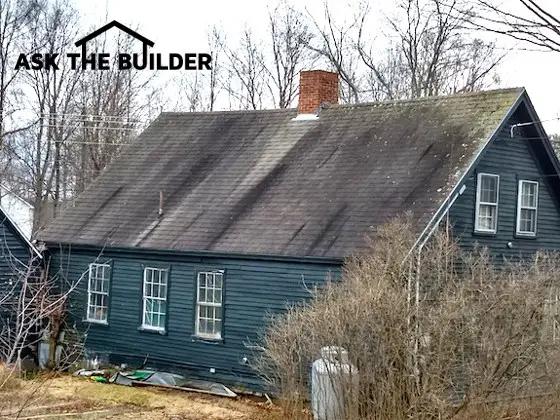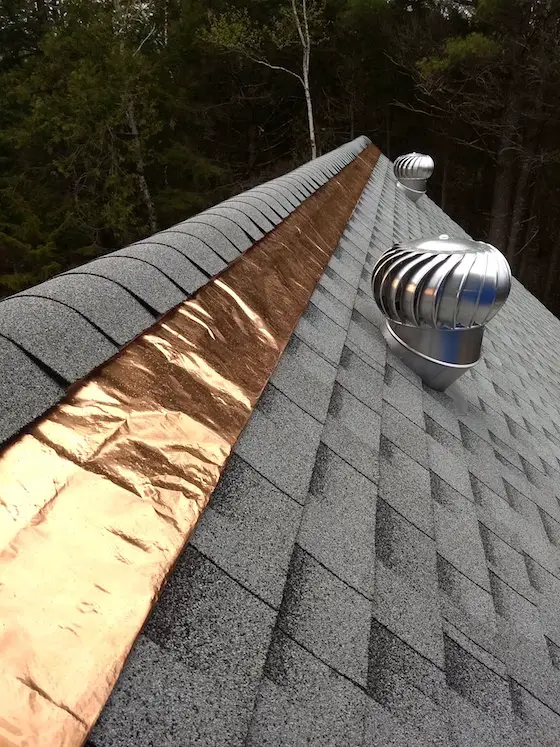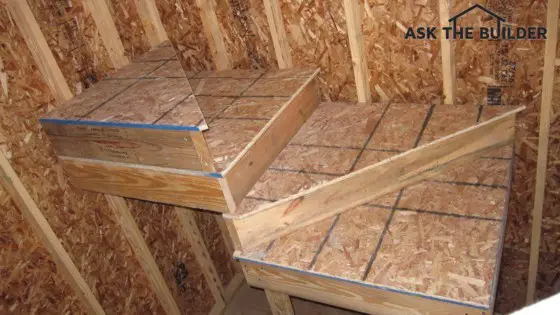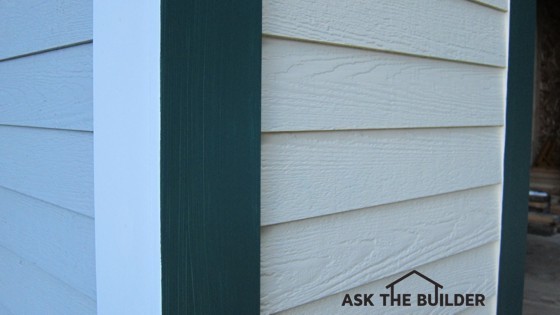Fall has arrived here in New Hampshire. We're not at peak color near my house, but it should happen this week. I took a few photos this morning because the sun finally peeked out from behind the clouds. It's been fairly gloomy the past four days. I'll get better photos soon!

Further down in this newsletter, you'll see a FLASH sale on Stain Solver and all of my digital download products. You'll have to hurry on both, because the sales are limited. I'm not making this up.
Tip of the Week - Painting Vinyl Siding
Vinyl siding expands and contracts significantly as the temperature goes up and down. Some people grow tired of the color of their house, and in the past it was nearly impossible to paint vinyl siding without it peeling.
Some of the major paint companies have risen to the challenge and have created paints that stick really well to vinyl siding and plastic trim. It's still wise to try to avoid darker colors as they absorb heat.
Remember that paint is just colored glue. If the bond between the paint and the vinyl siding breaks, the paint peels. You can see why the paint manufacturers had a significant challenge developing a paint that can stretch as much as the vinyl siding expands and then shrink back when the siding contracts as it get colder.
If you decide to paint your vinyl siding, you need to really clean it well. Stain Solver will help with that. Paint on overcast days when the temperatures are between 50 - 70F if at all possible.
Don't take the paint salesman's word that the paint will work. READ the label and make sure the paint is formulated for vinyl siding or plastic trim.
Start Your Own Handyman Business!
This Saturday I'm doing a LIVE 3-hour class that shows you how to start and run your own handyman business. This class is live in real time just like broadcast TV. You can ask me questions in a chat window as the class happens. It's easy. I have a friend of mine who I taught how to run a handyman business. Here are the facts:
He works the hours he wants to. He constantly has a backlog of work. He can take off any day he wants to. He cherry picks the most profitable jobs. He makes about six figures a year. I left out the most important part: He wakes up HAPPY each day because his work has very little stress.

There are only a FEW seats left in this class. Are you unhappy with your job? This class may invigorate you and get you to finally control your destiny. I have NO IDEA when I'm going to run this class live again. Go now and sign up. I'll see you in the classroom on Saturday October 6, 2012 at 1:00 pm ET.
AZEK Trim Molding
One of the last building materials I used on my shed was PVC trim. I chose it because I wanted the exterior of the shed to be nearly maintenance free. The siding is fiber cement, which will never rot, so I wanted a trim that had the same characteristics.
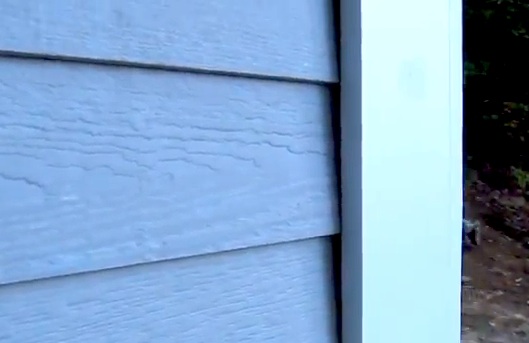
I chose to use AZEK trim for all sorts of reasons. You should just watch the video I taped to see it, and decide if you want to consider it on your next project. My guess is you will.
My Shed Video Series
If all goes well today, I'll be taping the last videos for my shed project. I underestimated the time it would take for me to do many things without a helper. The good news is that I'll soon be editing and releasing the videos. At the outset of the project, I thought there would be 100 videos showing you step-by-step what to do. Well, I underestimated that too. There's not going to be 100 videos. I think the number will be closer to 200. As I'm typing this, some of the stair-building videos are downloading into this computer I'm using. Just yesterday, I taped close to 25 videos showing just 'part' of the stair building process. You're not going to believe the detail in these stair-building videos.
If you purchased the videos, either through the Kickstarter website or here through this newsletter, realize that SOON you'll be getting access to the videos!
Fantastic Architect You Can Use!
I want to introduce you to Keith Carney. He's an architect that lives in Connecticut, but can draw plans for a project far from his home. How do I know this? Keith drew the plans for my shed project, and he did a magnificent job. One of the things I like about Keith is he has lots of hands-on experience in building and remodeling. That gives him a unique perspective grounded in the reality of what building materials work best and what their limitations are.
Keith's a licensed architect in these states: CO, CT, ID, NE, NM, NV, WY and KS. He can get a license in other states, as it's just a matter of filling out paperwork. But for many jobs around your house, you many not need a set of stamped drawings. You can hash that out with Keith.
Keith does both residential and commercial plans. Maybe you need something done at your place of business. Are you thinking of remodeling your basement, maybe remodeling your kitchen or bathroom? Keith can do the plans. Do you want to do a room addition? Keith can do it. Maybe you want a new home? Keith could be your guy. Reach out and contact him. I'm sure you're going to be very happy when you see examples of the detail in his plans. Believe me, details are everything when it comes to plans!
FLASH Stain Solver Sale
As soon as the shed videos are edited, I'm going to start paying much more attention to the Stain Solver business. What you're about to see is a peek at the future.
If you're aware of websites like Groupon, Amazon, Yugster, Woot, DealChicken, etc., they all tend to have flash sales. A flash sale is very limited in scope or the time of the sale. It's also a sale that happens with little or no warning. Those people paying attention reap huge savings by opening up email announcements.
For example, I subscribe to Woot alerts. An item may go on sale, but they only have 50 or 100 available at that price. You have to quickly open the emails when the arrive and take action if you want the deal.
That's part of the new strategy with Stain Solver. Subscribers to the Stain Solver newsletter are going to see these flash sales first. If you buy Stain Solver, you automatically get put on the newsletter list. I will announce sales here in this newsletter, but the Stain Solver subscribers get pick of the litter.
Here's the first flash sale: Beginning right now, there are just 100 50-pound buckets of Stain Solver on sale for 15% off. I know these are going to disappear fast, so you better go grab one now if you want one at the sale price. The sale price is ONLY available at the AsktheBuilder.com shopping cart. You need to CLICK HERE.
Digital Products Sale Too!
Moments ago, I received an email from Michaela who lives in Boston, MA. I was just down there last night! But I digress. Read about the horrible mess she's now in. It's too bad she didn't use my Room Addition Checklist. More on that after you read her email:
"I am currently 2/3 of the way completed in adding a second floor to my home. I have not liked any of the subs that my GC has hired, thus far, or even my GC for that matter! I have told him that I would like to get my own painter instead of using his - he doesn't have a painter he always goes with; he'll be picking whoever gives him the lowest price. The GC says this is fine with him as long as he still gets his cut of the profit. I agreed that that would be fine to be fair. I suggested a fair 10% of the allotted amount of $8000. The GC said his profit is $2000 - 25% of the amount budgeted! He claims that his personal profit was very small in the beginning of the project and that he is getting his money from the tail end. However, this does not seem right to me! Why should I pay him $2000 for doing absolutely nothing!? I have signed a contract with him that does say that $8000 is allotted for painting and that he would be responsible for getting the house painted. However, if I have taken this responsibility off his plate, does he have a right to demand a profit, especially one that is so high?"
Let's do an autopsy on this problem. Michaela is in trouble because she didn't have a precise breakdown of ALL job costs at the bidding stage. What's more, she didn't get it in writing at the BIDDING stage what the overhead and profit would be for the builder.
Guess what? My Contractor Hiring Guides - great tools to use when you are getting bids - require that the bidding contractors give you cost breakdowns AND state their profit and overhead. You MUST know this before you sign a contract so you don't get in a pickle like Michaela.
My hiring guides do more than ask for a detailed cost breakdown. To show you how good they are, I've put them on sale. Every digital product I sell at my shopping cart is on sale at 50% off for the next five days. This means eBooks, checklists, eGuides, etc. In other words, anything that's made from electrons is on sale. The promo code is: fall50



